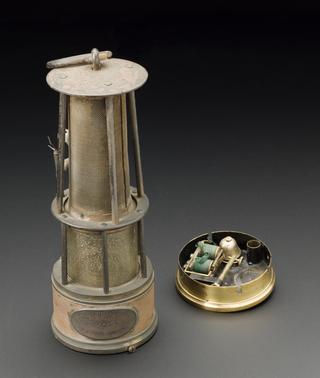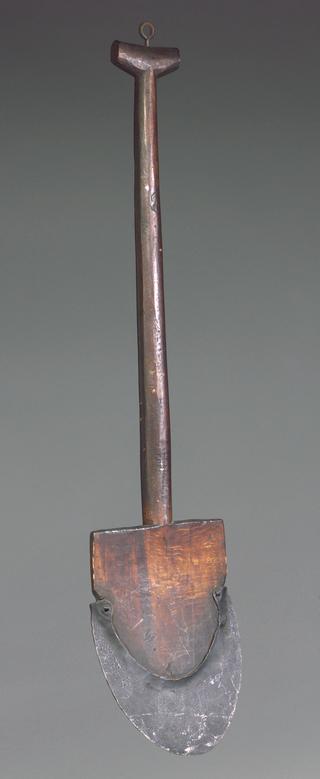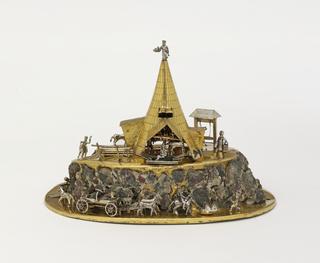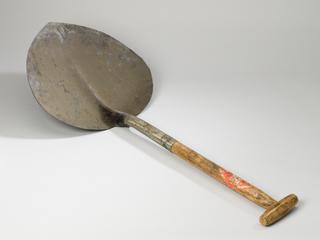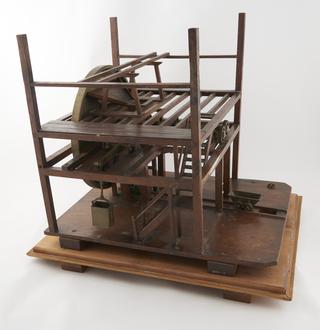
Safety lamp
- Made:
- 1868- in unknown place
- maker:
- George Stephenson

Safety lamp, Stephenson no.5, from the Royal Commission on Accidents in Mines 1879-86, 1869-74
Presented by The Royal Commission on Accidents in Mines.
This was used in Lancashire, and differs considerably from the original type (inv. 1895-141). Feed air is admitted through two slits, each 0.5 in. by 0.1 in., protected by gauze, just above the reservoir, and passes direct to the flame. The internal glass has no perforated cap, but the external gauze is doubled for 1.5 in. at the top. The lock is of the protector," self-extinguishing form, patented in 1868 by Mr. W. E. Teale. Petroleum spirit is used, and advantage is taken of the height to which it will rise to have a long wick tube to the reservoir. Outside the tube is a loose flanged sleeve, and, when the two are screwed in together, the sleeve is engaged by two hinged arms. When the reservoir is unscrewed, the sleeve remains stationary and the wick is extinguished for lack of air. Further security is given by a screw lock. The Commissioners ' experiments showed that Stephenson lamps were untrustworthy in explosive mixtures at velocities of 800 to 1,000 ft. per min., and at the higher limit almost always caused explosions.
Details
- Category:
- Mining & Ore Dressing
- Object Number:
- 1886-214
- Materials:
- brass (copper, zinc alloy) and steel (metal)
- type:
- safety lamps
- credit:
- Geological Museum (Jermyn St.)
